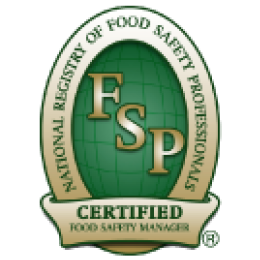Vibrio vulnificus, often referred to as the "definitive" threat of coastal areas, is a bacterium that can cause serious infections in humans. This blog aims to provide a comprehensive overview of Vibrio vulnificus, including statistics and past cases, while emphasizing the importance of prevention, with data from both the Centers for Disease Control and Prevention (CDC) and the World Health Organization (WHO).
Understanding Vibrio Vulnificus:
1. Statistics (CDC): According to the CDC, Vibrio vulnificus infections are rare but can be severe. In the United States, there are about 205 cases reported annually, with a mortality rate of 25%. These statistics highlight the seriousness of this bacterium.
2. Statistics (WHO): Globally, Vibrio vulnificus is part of a larger group of Vibrio species responsible for various infections. The World Health Organization reports that Vibrio infections are more common in warm coastal regions, with an estimated 80,000 severe cases and 34,000 deaths worldwide each year. While not all of these cases are solely due to Vibrio vulnificus, it underscores the global impact of this group of bacteria.
3. Past Cases: Vibrio vulnificus gained significant attention in 2019 when a woman in Florida contracted the infection after consuming raw oysters. Tragically, she succumbed to the illness. This case serves as a stark reminder of the risks associated with Vibrio vulnificus.
Prevention:
1. Cook Seafood Thoroughly: One of the primary modes of Vibrio vulnificus transmission is through undercooked seafood, particularly oysters. To reduce the risk, cook seafood to an internal temperature of at least 145°F (63°C).
2. Avoid Raw Seafood: If you're in a high-risk group, such as individuals with liver disease or weakened immune systems, it's best to avoid raw seafood altogether.
3. Wound Care: Since Vibrio vulnificus can enter the body through open wounds, it's essential to keep wounds clean and covered when in contact with seawater, especially if you have a pre-existing condition that weakens your immune system.
4. Saltwater Precautions: Be cautious when swimming in warm saltwater, especially if you have open cuts or sores. It's advisable to rinse off thoroughly after swimming in coastal areas.
5. Hand Hygiene: Proper handwashing is crucial, especially before eating or handling food. Use soap and water for at least 20 seconds.
6. Awareness: Know the symptoms of Vibrio vulnificus infection, including fever, chills, skin lesions, and nausea. Seek immediate medical attention if you suspect an infection.
7. Limit Alcohol Consumption: Excessive alcohol consumption can weaken the immune system, making individuals more susceptible to Vibrio vulnificus. Drink in moderation.
Conclusion:
Vibrio vulnificus is a formidable adversary, but with the right knowledge and precautions, you can significantly reduce your risk of infection. By understanding the statistics from both the CDC and WHO, learning from past cases, and following prevention tips, you can protect yourself and your loved ones from this potentially life-threatening bacterium. Stay safe and informed to ensure a definitive defense against Vibrio vulnificus.





